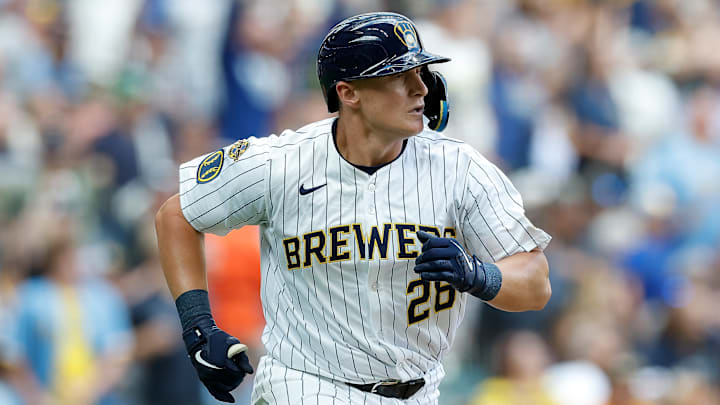When the Milwaukee Brewers swung a buy-low deal with the Chicago White Sox earlier this season, few fans thought much of it. Aaron Civale wanted out of Milwaukee after losing his spot in the rotation, and in return, the Brewers took a flier on Andrew Vaughn, a former No. 3 overall pick in 2019 whose career in Chicago never matched the draft-day hype.
At the time, it felt like a swap of expendables. But Vaughn wasted no time rewriting the narrative, showing that sometimes all a player needs is a change of scenery.
Andrew Vaughn’s Brewers revival hits first real test
After trudging along at the plate for the White Sox with an uninspiring .189/.218/.314 slash line, Vaughn immediately flipped the script in Milwaukee. From June 13 to August 10, he went on a tear that would’ve made any cleanup hitter jealous: a .348/.412/.629 slash with seven home runs, 28 RBIs, and a 186 wRC+. Suddenly, the former top prospect was producing like the middle-of-the-order force Chicago envisioned but never witnessed. For two months, the Brewers looked like geniuses.
But baseball giveth and baseball taketh away.
Since August 10, Vaughn has cooled considerably, slashing just .209/.289/.328 with two home runs, 10 RBIs, and a 76 wRC+. The difference has been noticeable. His strikeout rate has ticked up slightly (14.8 percent compared to 12.7 percent during his hot stretch), but the bigger concern is his contact quality. Vaughn’s soft-contact rate has nearly doubled from 7.7 percent to almost 14 percent, showing that pitchers are finding ways to neutralize his power.
Regression was always inevitable. Even the most dangerous sluggers don’t sustain a .348 batting average for long in today’s game. What matters now is whether this is a temporary slump or a sign that Vaughn has simply reverted closer to the hitter he was in Chicago. The Brewers can take solace in the fact that his walk rate remains steady near 10 percent, suggesting his approach hasn’t unraveled. But his ability to consistently drive the ball may be the next adjustment Milwaukee needs to unlock.
The good news? Vaughn’s resurgence, even in flashes, has already justified the trade. Milwaukee still has another two years of team control to figure out whether he’s the long-term answer at first base or just a temporary jolt.
Either way, it’s undeniable: Vaughn’s journey has become a case study in how much organizational culture, development, and opportunity can impact a player’s trajectory. The White Sox couldn’t get this version of him, but the Brewers might still find a way to make him stick.
